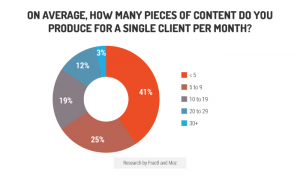
I like reading success stories but, what I love even more is when determined entrepreneurs set themselves a goal and achieve it. I came across a Shopify article earlier this year where four entrepreneurs embarked on building an eCommerce business and generating revenue after just 3 days.
Building an eCommerce business can be as simple, or as complex as you want it to be. It is easy to get lost in the eCommerce world and forget about the things that matter when it comes to building a website that sells a product/service.
If you are looking for inspiration with your eCommerce site keep reading as I will share some of the most important parts of their journey.
The first notable part of Richard, Tommy, Tucker and Mark’s journey was that they had to spend money upfront, to make this happen. Unfortunately, if you want to make something a success, you will have to invest your hard earned cash. A modest $ 500 (£323.87) was spent to help launch the business.
Before getting started, the four of them sat down and brainstormed. They needed to come up with an action plan. They wrote down the following;
- Determine what to sell
After making a plan of action, they then needed to decide what to sell. They chose Matcha Tea as their product of choice as it is current, easily to ship and popular among different age groups. This, however, took research which I believe to be extremely important. You need to do your market research before you take a product to market. Matcha Powder has grown in popularity dramatically since 2007 making it a great product to sell. They have found their need in the market.
- Select an appropriate business model
As they were short on time and on a deadline, they knew the wholesale option wasn’t suitable, so decided to sell direct to consumer. They also had the choice of drop shipping or manufacturing their own Matcha Tea. Again, because of how time sensitive this project was, they decided to dropship Matcha instead.
- Source a supplier
When looking for a supplier, they wanted someone who was low cost, able to give them private label rights and someone who was reliable. After quite a lot of research on Google, they found it difficult to find a supplier who would offer private labelling.
After broadening their search online to include “tea and coffee dropshippers”, “tea suppliers”, “white label tea” and “private tea rights” they still couldn’t find the right company so, they decided to pick up the phone and speak to someone.
They finally found a dropshipper who offered low cost per unit pricing, private labelling, packaging and low shipping rates.
- Order samples
After finding the supplier, they then had to order samples to make sure that the tea was what they thought it would be and for photography purposes. They received great reviews from those who tested the Matcha Tea and were happy to move forward. They also photographed the final product, using their iPhones.
- Determine pricing
After doing their research, they found that most Matcha Tea’s were priced between $ 15-30 per 30g of Matcha. Knowing that it cost them $ 10.25 per tin, they wanted close to 60% profit margin so decided on selling at $ 24.99.
- Create the brand
They wanted their branding to reflect an organic, pure, healthy lifestyle. After looking at Tea’s similar to what they were selling (competitors) they noticed that in terms of design and colour, there was a lot of white space, clean type as well as different copywriting techniques to encompass “a better you”. This became their branding focus.
After using Shopify’s business name generator tool, they decided on Hello Matcha as it was easy, simple and the .com was available for purchase. The next thing for them to create was their logo. They wanted something clean, fresh and easy to read. See below for their final design.

- Set up the online store
As they were only selling one product, without any variations it made for an easy website build inside of Shopify. After spending $ 180 on their theme, they then spent two hours customising the theme, adding a hero image, adding their photographs and creating the website copy to give them their final look.
So much more went into their project, which you can read here.
I decided to leave the article here because their journey building an eCommerce business from scratch is something that can only be fully understood if the person who did it, is writing about it. To see how Richard, Tommy, Tucker and Mark generated their revenue, click here to read the full story.
Digital & Social Articles on Business 2 Community(145)







